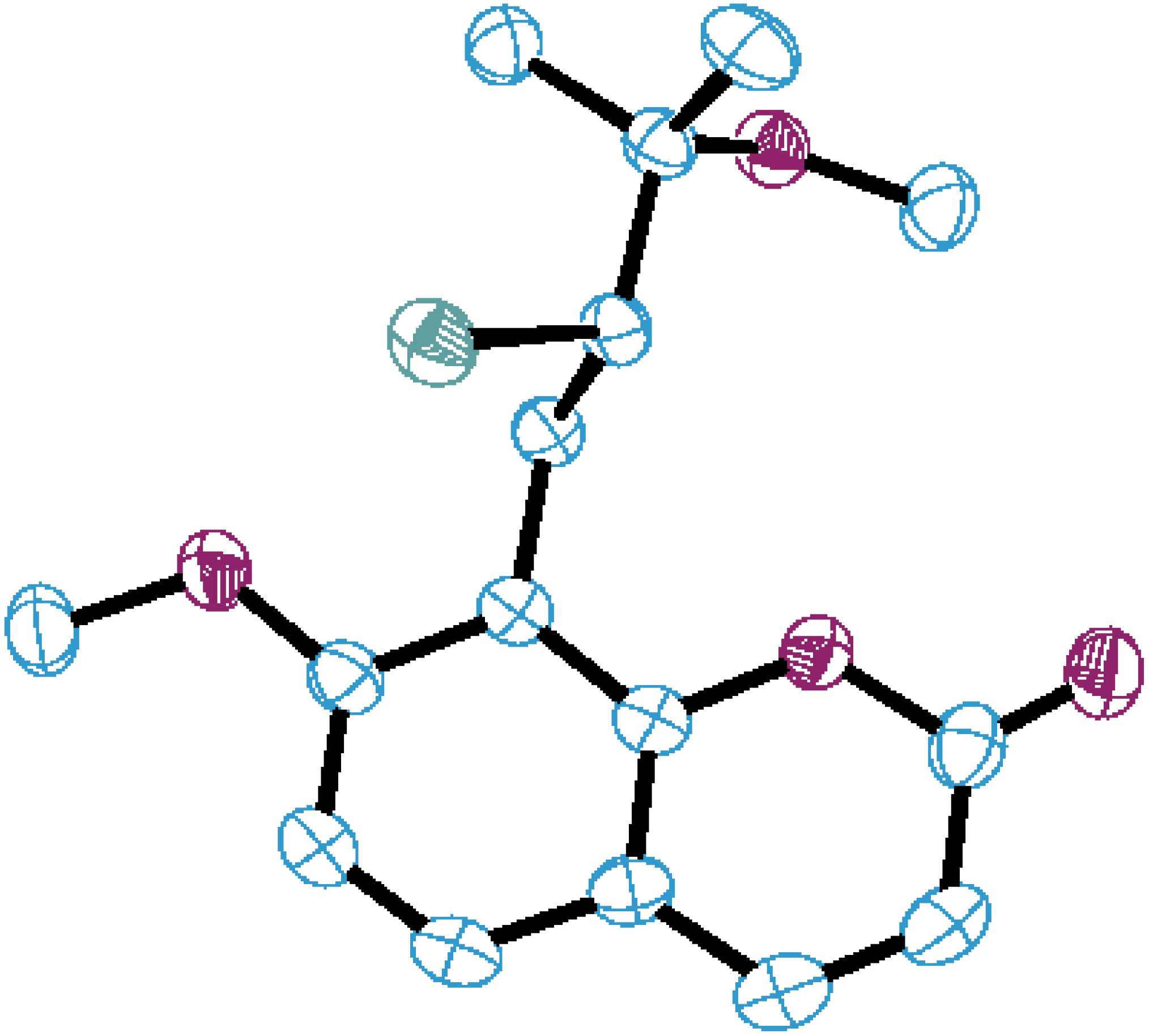Microwave Assisted Regioselective Bromomethoxylation of Alkenes Using Polymer Supported Bromine Resins
Abstract
:Introduction
Results and Discussion

| S.No | MWI (min) | Perbromide resin (mmol/g) | Brominechloride resin (mmol/g) |
|---|---|---|---|
| 2 | 0.5 | 1.652 | 1.592 |
| 3 | 2 | 1.628 | 1.571 |
| 4 | 5 | 1.601 | 1.518 |

| Alkene | Product | Perbromide resin (I) | Brominechloride resin (II) | ||
|---|---|---|---|---|---|
| Time(min) | Yield(%) | Time(min) | Yield(%) | ||
| 2 |  2a 2a | 5 | 61 | 5 | 65 |
| 3 |  3a 3a | 2 | 85 | 3 | 80 |
| 4 |  4a[12] 4a[12] | 5 | 71 | 5 | 75 |
| 5 |  5a 5a | 1 | 85 | 2 | 90 |
| 6 |  6a 6a | 5 | 63 | 5 | 65 |
| 7 |  7a 7a | 0.5 | 92 | 0.5 | >95 |
| 8 |  8a 8a | 0.5 | 90 | 0.5 | 92 |
| 9 |  9a 9a | 0.5 | >95 | 0.5 | >95 |
| 10 |  10a[13] 10a[13] | 5 | 40 | 5 | 52 |

Experimental
General
Spectral data:
Conclusions
Acknowledgements
References and Notes
- Shuttleworth, S. J.; Allin, S. M.; Wilson, R. D.; Nasturica, D. Synthesis 2000, 1035–1074.
- Bhalay, G.; Dunstan, A.; Glen, A. Synlett. 2000, 12, 1846–1859.
- Akelah, A.; Sherrington, D.C. Chem. Rev. 1981, 81, 557–587.
- Gopalakrishnan, G.; Kasinath, V.; Pradeep Singh, N.D.; Thirumurugan, R.; Sundararaj, S.S.; Shanmugam, G. Molecules 2000, 5, 845–848.
- Curtin, D. Y.; Meislich, E.K. J. Amer. Chem. Soc. 1952, 74, 5518–5520.
- Dulcere, J. P.; Rodriguez, J.; Santelli, M.; Zahara, J. P. Tetrahedron Lett. 1987, 28, 2009–2012.
- Buckles, R. E.; Filler, R.; Hilfman, L. J. Org. Chem. 1952, 233–242.
- Smith, K.; James, M.; Matthews, I.; Bye, M. R. J. Chem. Soc. Perkin Trans. 1 1992, 1877–1878.
- Cacchi, S.; Caglioti, L. Synthesis 1979, 64–66.
- Geetha Gopalakrishnan; Pradeep Singh, N.D.; Kasinath, V.; Sivarama Krishnan, M.; Malathi, R.; Rajan, S.S. Tetrahedron Lett 2001, 42, 6577–6579.
- 1-Bromo-2-methoxydecane (1a): CA: 64:11076a. 1965.
- Calo, V.; Lopez, L.; Fiandanese, V.; Naso, F.; Ronzini, L. 5-(2-Bromo-1-hydroxy-1-methylethyl)-2-methylcyclohex-2-ene-1-one (4a). Tetrahedron Lett. 1978, 49, 4963–4966. [Google Scholar]
- Olah, G.A.; Bollinger, J.M. 2-Bromo-3-methoxy-2,3-dimethylbutane (10a). J. Amer. Chem. Soc. 1967, 89, 4744–4746. [Google Scholar]
- CCDC N°: 173576.
- Sample Availability: Samples of compounds 1a, 2a, 4a, 6a, 7a, 8a, 9a and 10a are available from the authors
© 2002 by MDPI (http://www.mdpi.org). Reproduction is permitted for noncommercial purposes.
Share and Cite
Gopalakrishnan, G.; Kasinath, V.; Pradeep Singh, N.D.; Santhana Krishnan, V.P.; Solomon, K.A.; Rajan, S.S. Microwave Assisted Regioselective Bromomethoxylation of Alkenes Using Polymer Supported Bromine Resins. Molecules 2002, 7, 412-419. https://doi.org/10.3390/70500412
Gopalakrishnan G, Kasinath V, Pradeep Singh ND, Santhana Krishnan VP, Solomon KA, Rajan SS. Microwave Assisted Regioselective Bromomethoxylation of Alkenes Using Polymer Supported Bromine Resins. Molecules. 2002; 7(5):412-419. https://doi.org/10.3390/70500412
Chicago/Turabian StyleGopalakrishnan, Geetha, Viswanathan Kasinath, N. D. Pradeep Singh, V. P. Santhana Krishnan, K. Anand Solomon, and S. S. Rajan. 2002. "Microwave Assisted Regioselective Bromomethoxylation of Alkenes Using Polymer Supported Bromine Resins" Molecules 7, no. 5: 412-419. https://doi.org/10.3390/70500412





